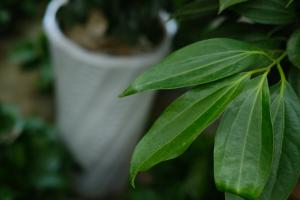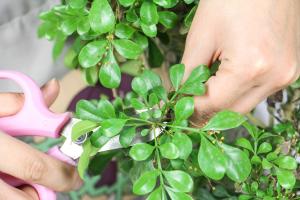How to Take Care of a Ficus Tree Plant
Ficus is a genus of flowering plants that belong to the family Moraceae. These plants are commonly known as fig trees, and they are popular as indoor plants due to their aesthetic appeal and air-purifying qualities. However, like all plants, ficus trees require proper care and attention to thrive. Here are some tips that will help you take care of your ficus tree plant:
Light
Ficus trees require bright, direct sunlight to grow adequately. Therefore, place your plant near a window that gets at least six hours of bright sunlight every day. If you don't have a window that provides enough light, consider using artificial grow lights to supplement natural sunlight. However, ensure that you do not place the plant close to the window, as this could cause the leaves to burn.
Watering
It is crucial to know when to water your ficus tree to prevent over or under-watering. The watering frequency depends on the season, humidity, and temperature. In general, water your plant every seven to ten days in the summer and decrease watering frequency during the winter months. When watering, ensure that the soil is thoroughly saturated, but avoid waterlogging. Use soil that drains water well and allow the soil to dry out partially before watering again.
Fertilizing
Ficus trees benefit from regular fertilization to promote growth and healthy foliage. You can use a balanced liquid fertilizer for houseplants, following the instructions on the label. Fertilize once a month during the growing season (spring and summer) when the plant is actively growing. However, reduce fertilizer application during the plant's dormant season (fall and winter).
Pruning
Regular pruning helps to keep your ficus tree in shape and remove any dead or diseased branches. You can prune your plant during the growing season to remove any unwanted leaves or branches. However, avoid a lot of pruning in the plant's dormant season as this may damage the plant. Use clean pruning tools and sterilize them with rubbing alcohol before and after use to prevent the spread of diseases.
Pests and Diseases
Ficus trees are occasionally prone to pests and diseases. Spider mites, scale insects, and mealybugs are common pests that attack ficus trees. To prevent pest infestations, ensure that the plant is in a well-ventilated area and not overwatered. Check your plant regularly for signs of infestation, such as yellowing leaves or honeydew. Should your plant have pest problems, you can use insecticides formulated for houseplants or natural solutions like neem oil or insecticidal soap.
Fungus, bacterial, and viral infections can also affect ficus trees. These infections can cause brown spots on the leaves, leaf loss, and stem rot. If you notice any signs of such infections, remove the affected leaves or branches and keep the plant in a well-ventilated area to encourage air circulation.
Conclusion
With proper care and attention, your ficus tree plant can grow to be healthy, vibrant, and an excellent addition to your home decor. Remember to provide your plant with adequate light, water, fertilizer, and adhere to the pruning guidelines. Additionally, prevent pest infestations and diseases by keeping the plant in the right conditions and identifying problems early enough to take action.

 how many times do yo...
how many times do yo... how many planted tre...
how many planted tre... how many pine trees ...
how many pine trees ... how many pecan trees...
how many pecan trees... how many plants comp...
how many plants comp... how many plants can ...
how many plants can ... how many plants and ...
how many plants and ... how many pepper plan...
how many pepper plan...





























